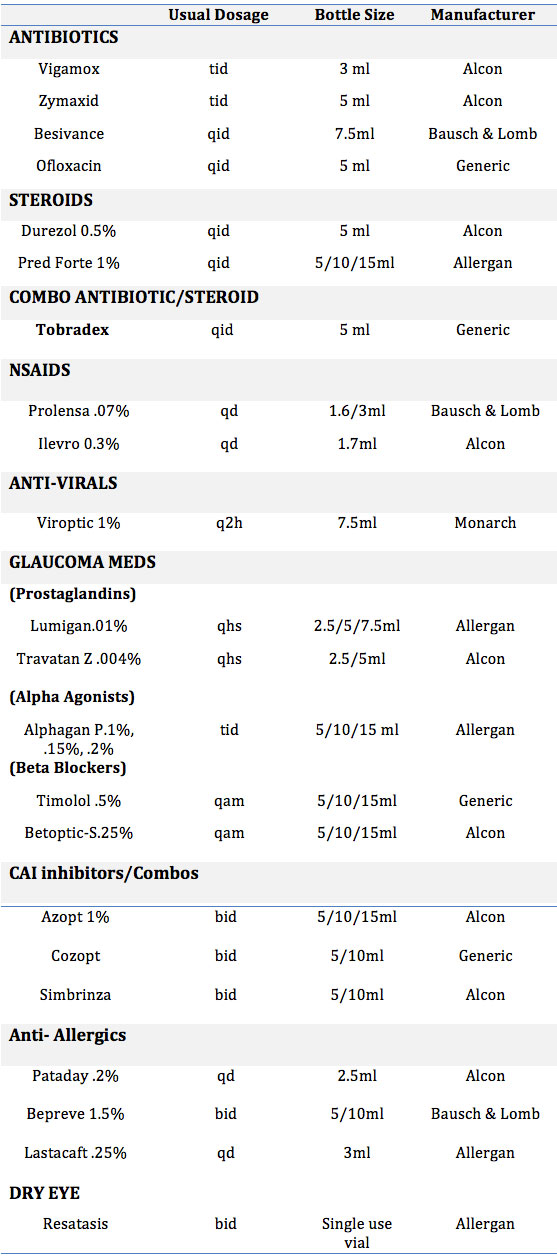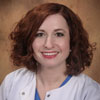
Medication being prescribed by the eye doctor is a daily task. They are treating everything from glaucoma to different types of eye infections and inflammations. Every year there are different types of medications on the market. It is a responsibility of the optometric/ ophthalmic technician to know the names of these medications, the appropriate spelling of the medications, and the reason they are being prescribed.
There are ways to make this an easy task. Having a printed list of the medications your doctors prescribe most commonly is very convenient. Another office we co-manage with recently shared with me one of these lists. It is amazingly helpful. I decided to make a similar list for my office, with a few changes to the medications that my doctors use more on a daily basis and to share it.
Having the medications in the different categories would be the first step. (Example: Antibiotics, steroids, NSAIDS, antibiotic/steroid combination drugs, anti-virals, glaucoma treatments, anti-allergics, and dry eye treatments.)
List the name, normal dosage, and bottle size and the manufacturer. These are all helpful when writing a prescription or calling one into a pharmacy.

The medications may change in dosage depending on how your doctor is prescribing them. Each situation will be different. This list should be used as a reference guide. The doctor will give the actual instructions on how the patient should use the drops.
Each office's list will be different. The list will be made per the preference of the doctors you work with. The list will also change as new medications come out. Keeping this list posted in the exam rooms and in the technicians station will help guide you. Using the list on a frequent basis will help you memorize the different medications and their uses.

Linda Hardy is a Certified Optometric Technician and Certified Ophthalmic Assistant. She is also ABO certified and NCLE certified and a Licensed Dispensing Optician in the state of Georgia. She has been with a private optometry practice in Newnan, Georgia for 15 years as the clinical coordinator.
Linda graduated from Georgia Medical Institute as a Registered/Certified Medical Assistant in April 1996. She began working with a group of ophthalmologists as an ophthalmic assistant. She switched her career to optometry in 1999. She has had the opportunity to become knowledgeable in many areas of the eye field from assisting to opticianry.












